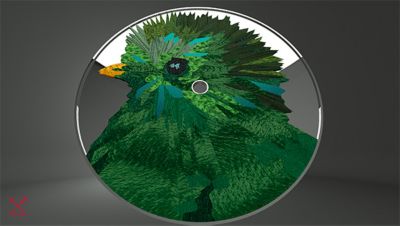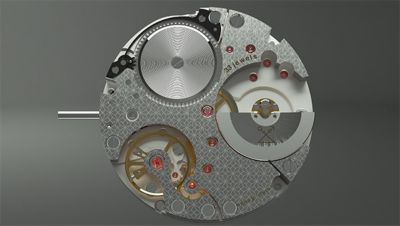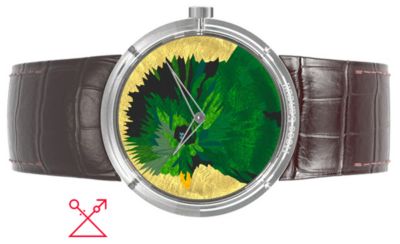-
United States -
United Kingdom -
India -
France -
Deutschland -
Italia -
日本 -
대한민국 -
中国 -
台灣
-
Ansys s'engage à préparer les étudiants d'aujourd'hui à la réussite, en leur fournissant gratuitement un logiciel de simulation.
-
Ansys s'engage à préparer les étudiants d'aujourd'hui à la réussite, en leur fournissant gratuitement un logiciel de simulation.
-
Ansys s'engage à préparer les étudiants d'aujourd'hui à la réussite, en leur fournissant gratuitement un logiciel de simulation.
-
Contactez-nous -
Carrières -
Étudiants et universitaires -
-
S'inscrire -
Déconnexion -
Espace client -
Support -
Communautés partenaires -
Contacter le service commercial
Pour les États-Unis et le Canada
+1 844.462.6797
-
ANSYS BLOG
January 22, 2021
Speos Helps Bring a Limited Edition Luxury Watch Brand to Light
To a generation who grew up telling time by looking at their phones, watches may seem anachronistic. But luxury timepieces stand out from the crowd, and there are many people who value owning one. For them, Jura Mountain watchmaker XRby has created métiers d’art limited-edition wristwatches whose glass boxes — that is, the part of the watch that protects the face — were designed using Ansys Speos optical system design software with support from CADFEM.
XRby’s unique watches, which are produced one at a time and on demand as they are sold, have small masterpieces signed by the artist on their dials. Each piece of art is made with precious gemstones and organic fibers that are used as inlaid decorative marquetry, all on a canvas less than 2 inches wide.
There’s no comparable watch concept in the world.
Avoiding Optical Deformation and Image Distortion
To optimize the wristwatch wearer’s experience, the design process includes simulating the glass box under a variety of real-world lighting and use conditions. The goal is to ensure there will be no optical deformations that could make it difficult, if not impossible, to see the entire, detailed watch face clearly.
Using Speos optical design simulation software, XRby was able to innovate watch concepts, test various watch assemblies and rapidly evaluate aesthetic options, assessing more than 100 precious materials and elements. According to XRby founder Xavier Rousset, engineers selected the optimal materials, shapes and decorations for the watch’s design in mere hours, reducing development time and costs compared to traditional simulations that may require days to deliver the same results.
With Speos texture mapping, for example, engineers were able to forecast how watch materials behave under different lighting conditions, an essential step in determining which glass box material would best control light diffraction, light reflection and image distortion. Ultimately, they selected sapphire crystal.
Sapphire crystal has, in fact, been used to make wristwatch glass boxes since the 1980s. Although the material is strong and shock resistant, shaped sapphire crystal has a complex geometry that can cause undesirable optical deformations. Using Speos, XRby selected the sapphire thickness and edge angles to improve the wearer’s visualization of the watch dial.
The result is a watch with a glass box that allows the beauty of the dial artwork to be seen and appreciated in practically any light and from any angle.
Balancing Design Rules for Function, Beauty and Sustainability
According to Rousset, the design process focuses on balancing rules both for functional elements — the back of the watch case, the automatic movement and the hands — and what he called the “dream” part, that is, “the art gallery on your wrist where a masterpiece is displayed.”
Rousset first groups the functional attributes into a single physical block then applies a minimalist design that meets the standards of the Federation of the Swiss Watch Industry.
The next step is to design a sapphire crystal glass box to highlight and enhance each one-of-a-kind dial, not detract from it.
“There are few dimensional and dynamic constraints for the dial within the watch,” Rousset says. “Aesthetics are, therefore, the priority for this component, especially allowing the wearer to visualize the watch dial without any optical deformations.”
Aesthetics aren’t the only motivation for using simulation software, however. XRby’s sustainability goals, including their commitment to conserving natural resources and energy, are also aided by adopting an Industry 4.0 approach, which is influencing product manufacturing through digital technology and the internet of things (IoT).
Virtual Prototyping Cuts Development from Days to Hours
Introducing a new luxury brand to an elite audience isn’t something that’s typically done in a purely virtual manner. People want to see what they’re purchasing, especially when it’s a bespoke item with an expensive price tag. That is why, historically, customized watches require at least one physical prototype to attract customers.
But with high production costs — and with Rousset’s sustainability promise calling for no watches to be produced unless they have already been sold — doing a physical prototype was out of the question.
Instead, XRby is using Speos-generated, high-definition digital prototypes to attract targeted clientele. Available on the XRby website, these true-to-life images provide multiple views of a unique timepiece that is as close to holding an actual watch as possible, while saving the company manufacturing, materials or environmental costs.
Ansys Startup Program Accelerates Development
XRby accessed Speos through the Ansys Startup Program, which helps entrepreneurs and early-stage startups accelerate technology development. The program provides access to simulation software bundles to companies that have limited funding and revenue. It has helped more than 1,000 businesses since it began in 2016.
Learn more about the Ansys Startup Program.













